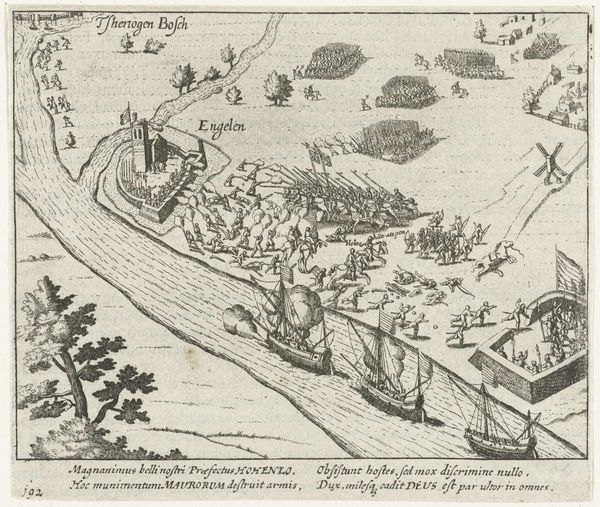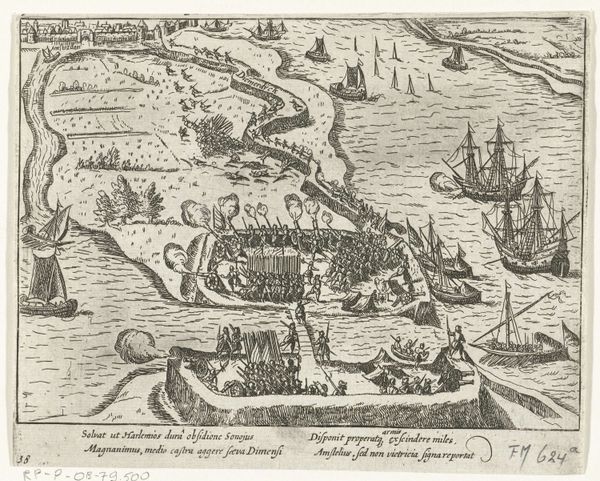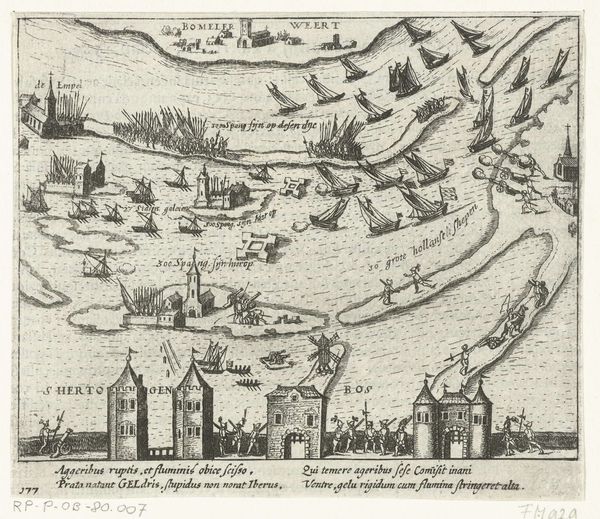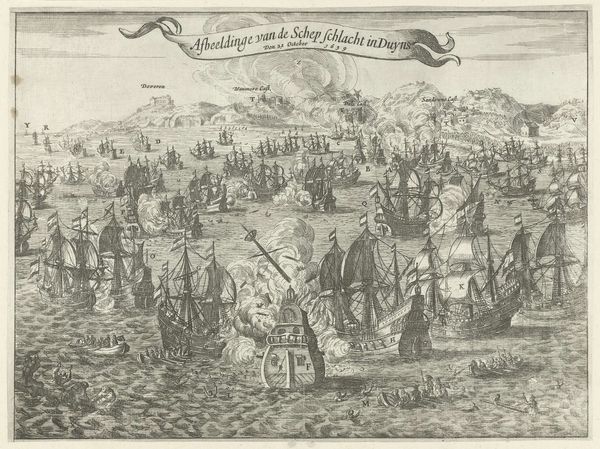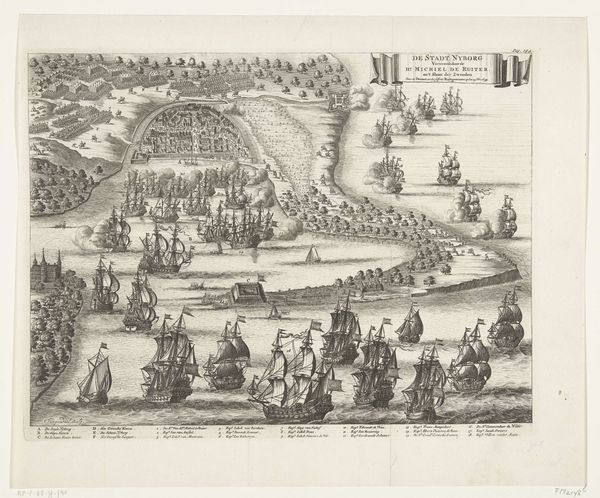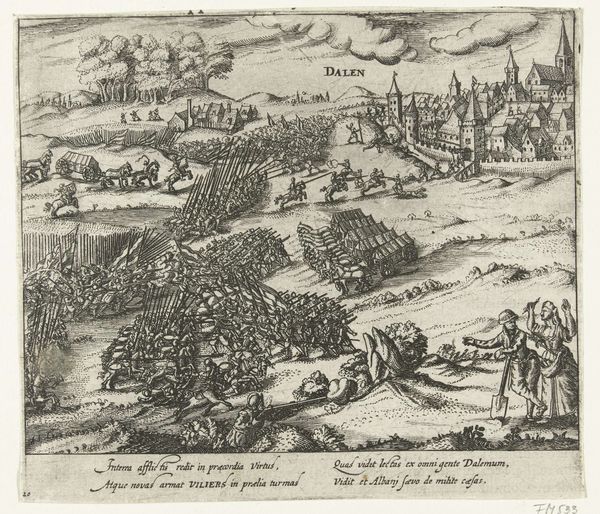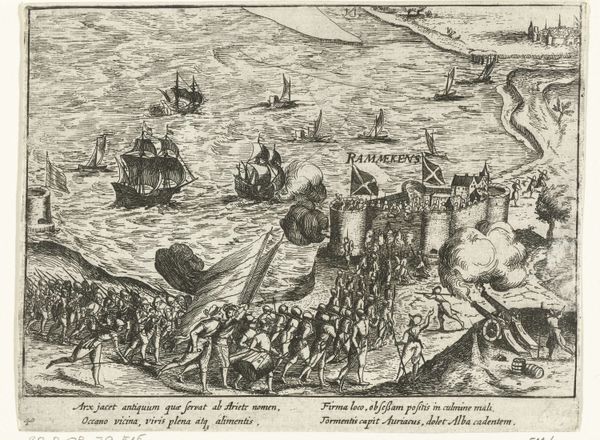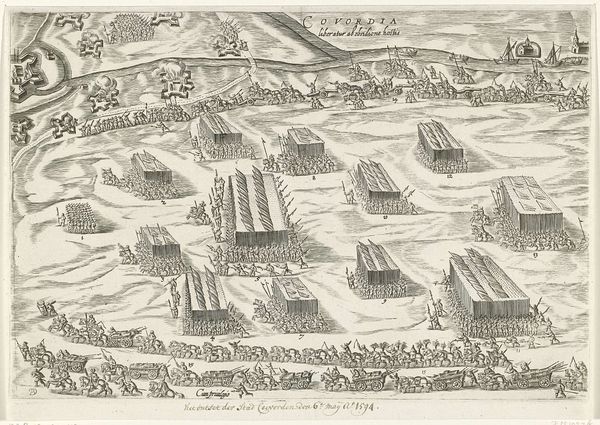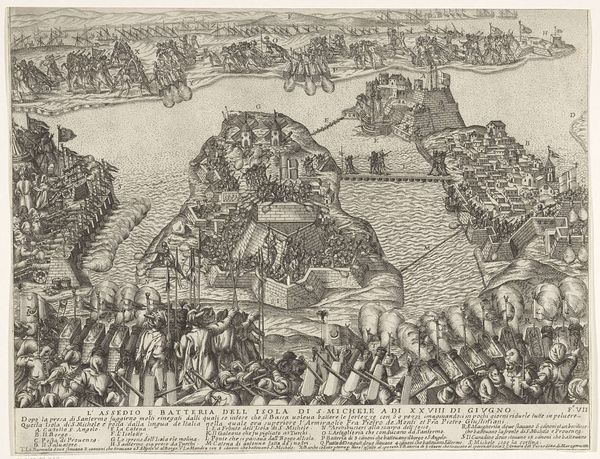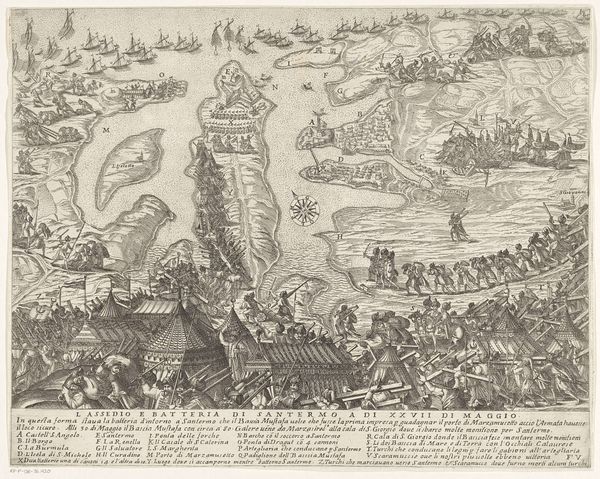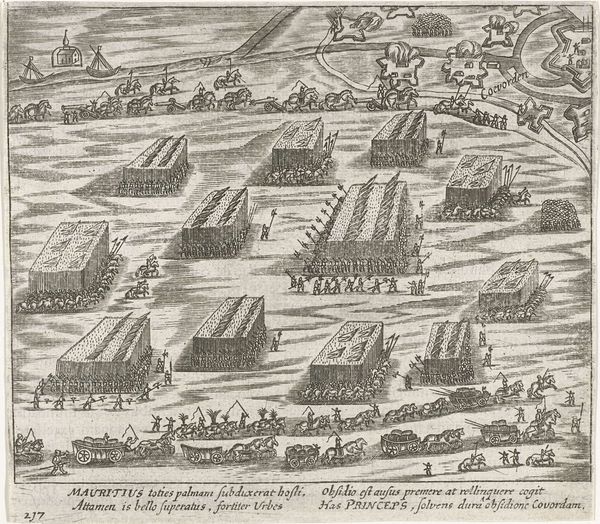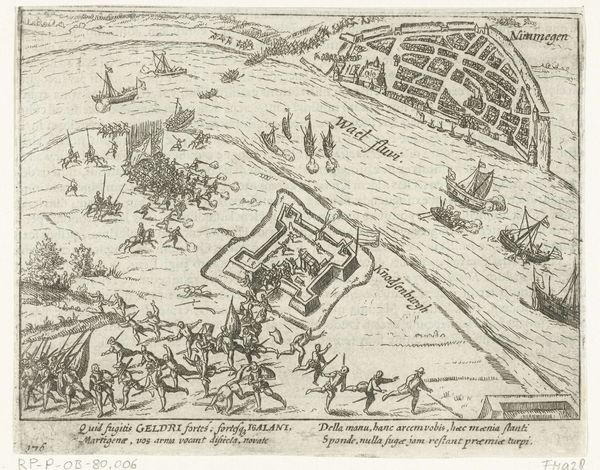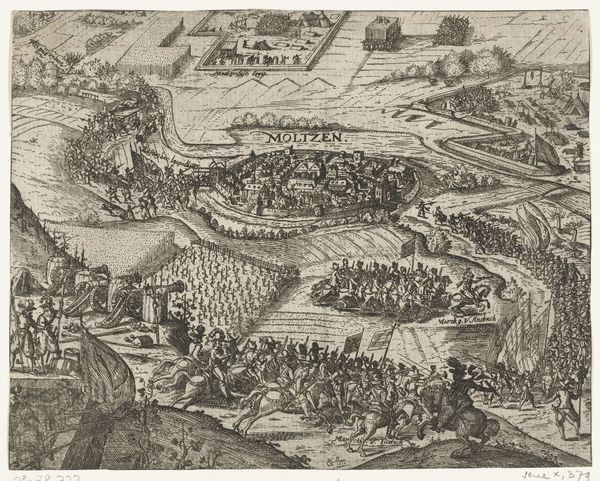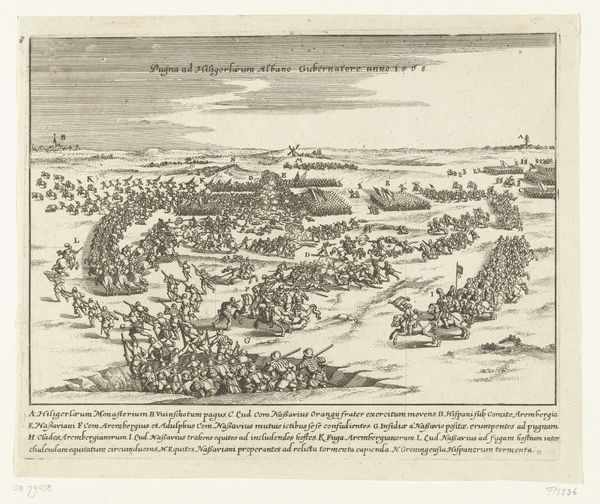
print, etching, engraving
#
baroque
#
dutch-golden-age
# print
#
etching
#
old engraving style
#
landscape
#
cityscape
#
history-painting
#
engraving
Dimensions: height 70 mm, width 158 mm
Copyright: Rijks Museum: Open Domain
Editor: This etching, titled "Inname van de stad Nyborg door Michiel de Ruyter, 1659," made in 1718 by Bernard Picart, depicts a naval battle. I'm struck by how much detail is crammed into this small space, almost like a blueprint. What's your initial take? Curator: It is fascinating how Picart presents warfare as a logistical operation. The very act of producing this print speaks to power and dissemination of information. What was the economic landscape that fostered a market for such prints depicting military victories? Consider the materials - copper, ink, paper – and the labor involved in etching and printing, each playing a role in creating and distributing this image to a consumer. Editor: So, you're less interested in the heroic narrative of the battle itself and more in the... business of it all? The production and consumption? Curator: Exactly! It encourages us to ask questions. Who purchased it? How was it distributed? Where was it displayed, and how did the proliferation of these images shape public opinion about the Dutch Golden Age's military endeavours, their role in empire building and global trade? Was this 'art' or a form of propaganda fueling further colonial aspirations? The cherubs feel less like artistic flourishes, and more like motifs deployed within a sophisticated strategy of political consumption. Editor: I hadn't considered it that way. I was focusing on the artistry, but framing it as a material object deeply embedded in a specific time changes everything. Curator: Think of the workshop producing this print. How many artisans were involved in each step of the production? From the copper miner, to the engraver, to the printer and seller, each contributed to a story about war through their own specialized labor. Editor: It is amazing how an artwork can become a launchpad for exploring the complete political economy surrounding its making. Thanks, I see it quite differently now. Curator: Precisely. It allows us to trace the intricate web of human interactions and material resources that underpins the creation and dissemination of visual narratives.
Comments
No comments
Be the first to comment and join the conversation on the ultimate creative platform.
